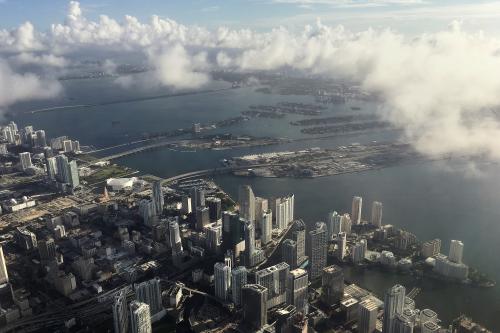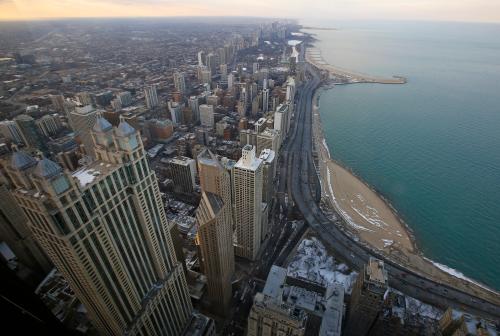Newly released census statistics are casting doubt on the view that this will be the “decade of the city.” Since 2010, there have been clear signs of a back-to-the-city movement—spikes in city growth attributed to the in-movement of young professionals, empty nesters, retirees, and even new immigrants rediscovering the richness of downtown life. Even more noteworthy, the decades-long suburbanization of metropolitan residents was turned on its head as city populations started to grow more rapidly than their surrounding suburbs.
These new statistics, that track growth through July 2016, suggest that this trend could be easing up. Within the nation’s major metropolitan areas, the suburban population is growing faster than their cities; and nearly two-thirds of the nation’s largest cities showed a drop-off in growth during the last year. These patterns do not necessarily imply the end of city attractiveness, but they do signal a shift away from the city growth dominance that was heralded three or four years ago.
City vs. suburb growth
For each year between 2010-11 and 2014-15, the combined primary city populations of the nation’s 53 major metropolitan areas* grew more rapidly than their suburbs (see Figure 1). In each of these five years, city growth exceeded one percent while suburban growth stayed below that level. This sharply contrasted the decades of post-World War II suburban growth dominance that continued through 2010.

Yet, the census data for 2015-16 show city growth declining to 0.82 percent—below the suburban growth rate of 0.89 percent. To be sure, metropolitan-wide growth also declined during this year, but cities took a bigger growth hit than the suburbs—suggesting increased city-to-suburb movement.
This suburban growth advantage shows up in both the Sun Belt (South and West) and Snow Belt (North and Midwest) regions but in different ways (see Figure 2). Because of increasing movement to the former region, both its cities and suburbs are growing faster than those in the Snow Belt. Sun Belt suburban growth overtook city growth already in 2013-14, but the gap has widened due to the recent drop in city growth.

The story in the Snow Belt is one of a continued city growth drop-off since 2010-11. Yet, despite this downturn, Snow Belt cities outgrew their surrounding suburbs until this past year, when the growth of Snow Belt cities, in the aggregate, nearly halved.
The aggregate suburban growth advantage in 2015-16 is evident in most, but not all, of the 53 major metropolitan areas (download Table 1). Suburban growth exceeded city growth in 35 areas. Among those that, in the last year, flipped from city to suburban growth dominance were southern metros (Charlotte, N.C.; Orlando; Tampa, Fla.; New Orleans, and Birmingham, Ala.), western metros (Denver and San Jose, Calif.), and in the Midwest (Minneapolis-St. Paul). There are 18 areas where city growth exceeds suburban growth, such as: New York, Washington, D.C., and San Francisco. But in seven of the 18, including those three, city growth declined in the last year.
Large city growth slowdowns
When examining large cities with populations over 250,000, a fairly pervasive pattern of city growth decline is evident. Among these corresponding 83 cities, 53 showed smaller growth in 2015-16 than in the previous year (download Table 2). Included on this list are 13 of the largest 17 cities, located in both the Snow Belt and Sun Belt. Moreover, 33 of these cities showed the smallest gains in 2015-16 than in any year since 2010.
Examples include the cities of New York, Chicago, and Houston, as shown in Figure 3; each of which registered an accentuated downward shift in the last year. New York’s and Houston’s 2015-16 growth rates are less than half of those compared to the previous year. Chicago experienced absolute negative growth, greater than in the two prior years—and the largest numerical decline of all cities of the country.

In 2015-16, 14 large cities registered a decline in their populations, compared with 12 in 2014-15 and just five in 2011-12. The greatest numerical declines, after Chicago, occurred in Baltimore, Milwaukee, Detroit, St. Louis, and Cleveland—each registering population losses exceeding 2,000 people.
All is not lost for cities, however. Even with the latest growth slowdowns, many large cities are doing better since 2010 than in the time period between 2000 and 2010—a down decade for city growth. In fact, 44 of the 83 large cities have already gained more people in the past six years than they had during the previous 10.
The real question is this: Will this year’s dip in city growth continue? There are reasons to suggest that it might. Census statistics released earlier this year revealed that pre-recession migration patterns to the Sun Belt, to smaller metropolitan areas, and to the exurbs are finally reviving. This “loosening” of previous migration constraints can be attributed to a rising economy, the revival of the housing market, and a small uptick in millennial migration. Especially for young adults, it is still not clear whether their early-decade migration to cities was due to post-recession economic constraints which prevented them from starting families and buying suburban homes, or because of a real preference for city life.
These new numbers suggest that suburbs are, again, becoming attractive to this group and to others. But, it is only a one-year data point. Thus, the jury is still out as to whether or not the 2010s will be the “decade of the city.”
* Major metropolitan areas are those with a population of over one million residents. Primary cities include up to three of the largest cities in each metropolitan area (with populations exceeding 100,000).







Commentary
City growth dips below suburban growth, census shows
May 30, 2017